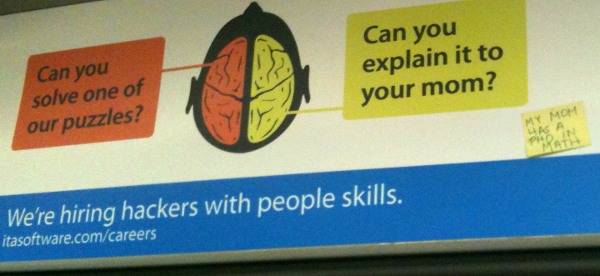This is cross-posted at Geek Feminism.
![By David Lapetina [GFDL (www.gnu.org/copyleft/fdl.html) or CC-BY-SA-3.0-2.5-2.0-1.0 (www.creativecommons.org/licenses/by-sa/3.0-2.5-2.0-1.0)], from Wikimedia Commons](https://restructure.wordpress.com/wp-content/uploads/2010/10/wood_white_king_chess_cropped.jpg?w=780) I demonstrated an aptitude for computers when I was a young girl, but I didn’t have home Internet access until I graduated from high school. I blame the Patriarchy, partly.
I demonstrated an aptitude for computers when I was a young girl, but I didn’t have home Internet access until I graduated from high school. I blame the Patriarchy, partly.
By the time I was in high school, I was usually the only person in my classes who didn’t have any Internet access, while most of my peers had high-speed access. When my peers communicated with each other through e-mail and chat, I was shut out of the social conversation and didn’t understand the “technical” terms they were using. I understood the creative potential of being able to communicate with computer users all over the world. I knew that Internet access would allow me to communicate with others without my social anxiety getting in the way. However, my father was hard-set against the idea of “the Internet”.
For five years, I was part of a persistent family campaign to convince my father that we should get Internet access. He thought that the Internet was a software program that was just a “fad” and would go out of style. Back then, the mainstream media was even more confused than now about what “the Internet” was. The news sensationalized stories about online predators luring young girls through “the Internet” to rape them. The implied moral of these news stories was that the Internet was dangerous and full of sexual predators.
My father did not work in an office then, so he heard more about “the Internet” through his coworkers. One male coworker basically explained to my father that The Internet Is For Porn. My father came home and told us that he was never going to let us have Internet access, because girls especially should be protected from exposure to pornography.
Read the rest of this entry »


![By David Lapetina [GFDL (www.gnu.org/copyleft/fdl.html) or CC-BY-SA-3.0-2.5-2.0-1.0 (www.creativecommons.org/licenses/by-sa/3.0-2.5-2.0-1.0)], from Wikimedia Commons](https://restructure.wordpress.com/wp-content/uploads/2010/10/wood_white_king_chess_cropped.jpg?w=780)
 Students who did not have
Students who did not have 